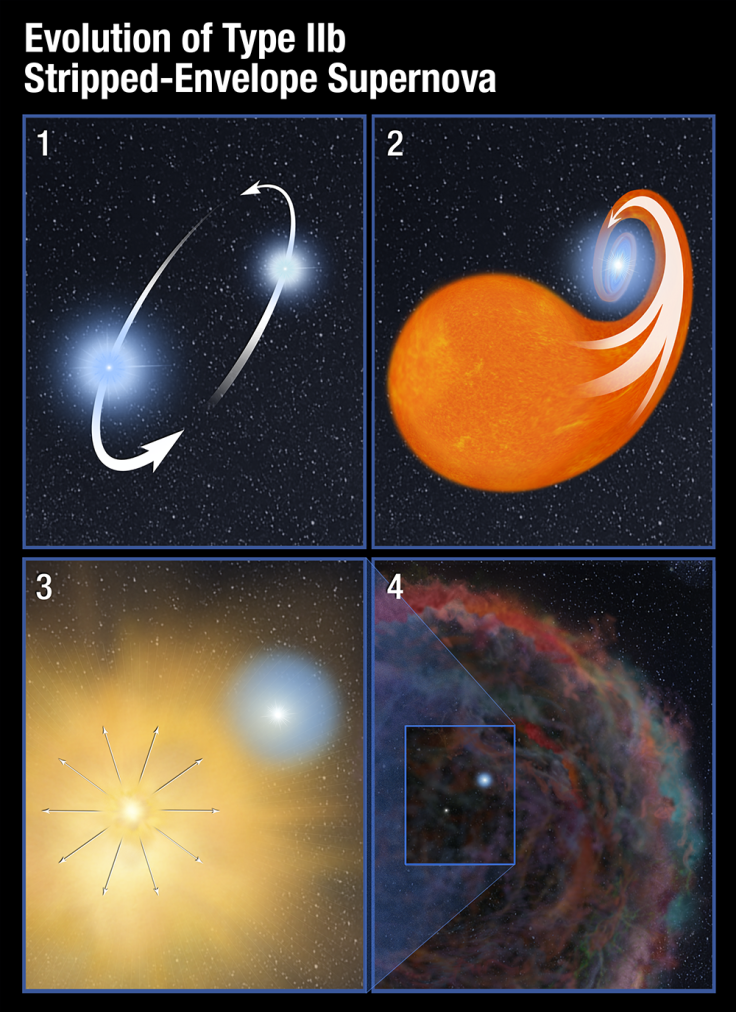Hubble Finds Star That Survived Companion’s Supernova Explosion After Stealing Its Hydrogen

If you were flying through space, irrespective of how you were doing it, it would be sensible to keep away from some objects, like black holes or massive stars on the verge of going supernova. These latter events, among the most energetic that occur in space, happen when a massive star runs out of fuel and collapses under the effect of its own gravity, and the afterglow from the explosion lasts for weeks or even months.
And yet, thanks to Hubble Space Telescope, we now know that one star survived the supernova explosion of its companion star, in an event that took place in a binary star system 40 million light-years away.
The supernova itself was observed 17 years ago in a galaxy called NGC 7424, and the event was named SN 2001ig. Its surviving companion, however, was observed with certainty only in 2016. Soon after the event in 2001, astronomers used the European Southern Observatory’s Very Large Telescope, and the Gemini South Observatory, both in Chile, which first hinted at the presence of another star among the supernova’s remnants.
It was only when the afterglow from SN 2001ig faded that Hubble, with its high resolution and ultraviolet capability, could actually find and photograph the survivor. Before the explosion, the two stars in the binary system took about one year to orbit each other.
“We know that the majority of massive stars are in binary pairs. Many of these binary pairs will interact and transfer gas from one star to the other when their orbits bring them close together,” Stuart Ryder from the Australian Astronomical Observatory in Sydney, and lead author of a recent study on the Hubble observation, said in a statement Thursday.
This transfer of gas was especially noticeable in this binary pair. In the years preceding the supernova, the surviving star had sucked away almost all the hydrogen from its companion, dooming it to a loss of fuel. Much before going supernova, the primary star had already become unstable due to this, and periodically blew off hydrogen in fits and spurts.
SN 2001ig is classified as a Type IIb stripped-envelope supernova, because the primary star had been stripped of most of its hydrogen in its stellar envelope — that part of a star which is responsible for moving energy from the core to the atmosphere. This type of supernova was first identified as such in 1987.

There are two theories to explain how stars lose their stellar envelopes. One holds stellar winds responsible for blowing off the envelope, and the other — like in the case of SN 2001ig — lose them due to the actions of a companion in a binary system.
With the launch of NASA’s James Webb Space Telescope, astronomers would find it easier to observe these supernovae and to confirm — or revise or abandon — their theories about how they come about.
Hubble is a partnership between NASA and the European Space Agency.
The research paper discussing SN 2001ig and its surviving, thieving companion, is titled “Ultraviolet Detection of the Binary Companion to the Type IIb SN 2001ig,” and was published in the Astrophysical Journal.
© Copyright IBTimes 2025. All rights reserved.



















